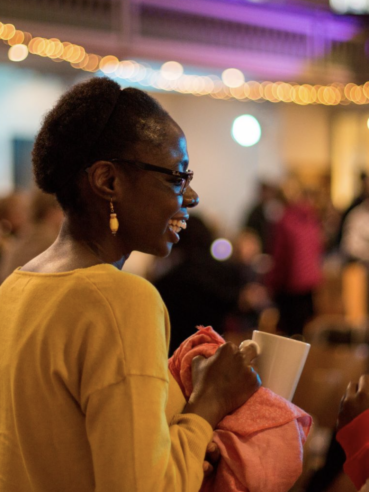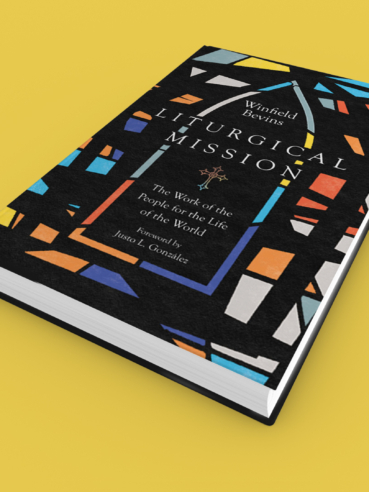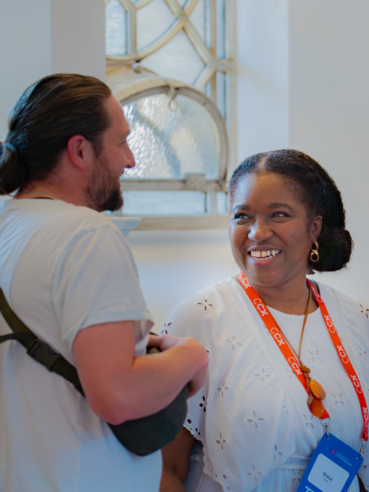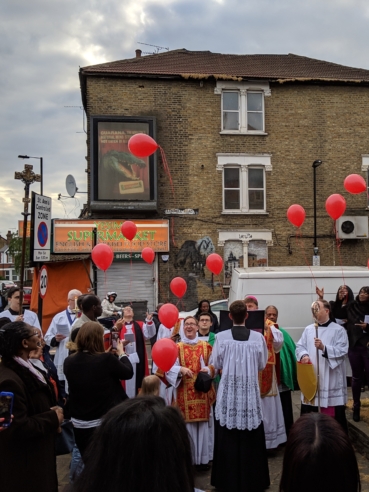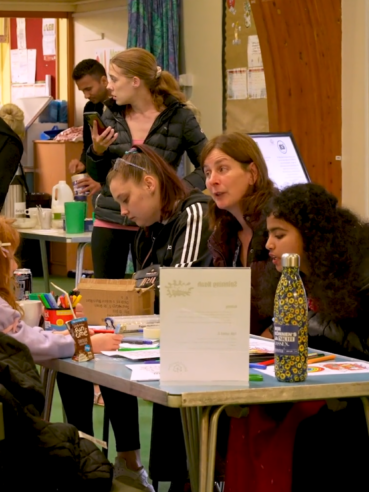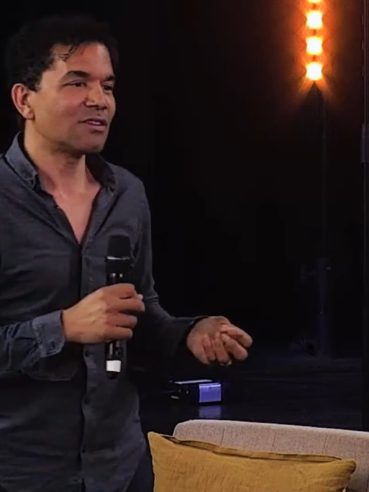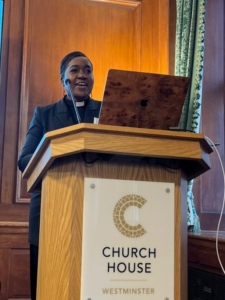 Grace Bally-Balogun is the Plant Stream Enabler for the Creative Growth Team. She delivered the following reflection at the Bishop’s Clergy Study Day on 23 November 2023.
Grace Bally-Balogun is the Plant Stream Enabler for the Creative Growth Team. She delivered the following reflection at the Bishop’s Clergy Study Day on 23 November 2023.
The globe is changing so quickly. From how we communicate, how we get our information and how we live in an ever-increasingly complex world.
Against this backdrop, mission is changing because the world has changed. Several sources have cited since the turn of the century that Western Christianity is on a steady path to decline. Thus, mission in the 21st century has had to flex in its approach.
In the UK, across all spheres and strata, we have witnessed the difficulties of embracing diversity in missional plans for race, gender, age, disability, neuro-divergence, and multi-cultural communities. Our challenge is to be incarnational with the gospel amidst rampant change and transition.
In doing so, let us consider three thoughts:
A Theology of Change
A Theology of Change recognises that God, who is outside of time and yet by his Spirit is with us, is constantly moving towards that eschatological vision by the strands of change and transition, caused by chaos and disruption. As such, the Church must be constantly on the move. In practice, this means the Church facing head-on whatever has been left within its wake. For example, this could be responding to periods of change and transition by intentionally and creatively adapting to understand and better serve the context.
Many of us will be familiar with the John 1:2 Message translation, which says, “The Word became flesh and blood, and moved into the neighbourhood”. I love that translation because something about it makes Jesus seem relevant for every community, even the council estates I grew up on in South London during my early childhood and teen years. This verse also speaks about the incarnational presence of the Son of God who took the form of man in the person of Jesus. His ‘one with us’ presence entered into time during a period of great transition; for it wasn’t so long ago, after the prophet Malachi, that there was a prophetic cessation of 400 years for Israel, and Palestine was under Roman rule.
Incarnational Presence
In his book, Incarnational Mission, Sam Wells notes the church having an incarnational presence simply by being with the world. Wells speaks of how the Church can ‘be with’ in various forms such as being with the lapsed, the excluded, the hostile, and those of no professed faith. He notes other less obvious categories as being with those of other faiths, organisations, the government, and being with institutions.
Just the other day, I was deeply perplexed after a conversation with a young woman. When she first mentioned her friend, I was encouraged by the news that though her friend was a non-believer (and would decline all her invitations to go to church), her friend loved hanging out with her to watch movies or go to the local café. However, this young woman commented that while she enjoyed doing these activities with her non-Christian friend, she’d much rather use that time serving in God’s kingdom. I thought, sadly, she had missed the point. Sometimes, the Church responds in the same way.
This Advent, we could easily focus on doing the same old ‘Christian’ activities and therefore neglect the basic need of friendships that come without any benefits to us. Simply rubbing shoulders with our neighbours can change lives. Encounters with Jesus’ incarnational presence transformed lives.
We need to think more about what it is like to ‘be with’ people this Christmas.
A Theology of Place
A barren land. A dwelling place. A shopping centre. A local café. A place of exile. These are all examples of ‘places’. Practicing an incarnational presence means the church being a faithful people wherever they find themselves and whatever the context may be.
I found great inspiration from some teaching notes by my colleague, Mark Scanlan at St Mellitus College, London, who concludes that the importance of space and what we do with it ‘RIGHT NOW’ is the practice of missiology. In other words, finding practical and reachable ways to share the secrets of the kingdom of God, this great mystērion.
This wonderful secret of the kingdom given during Advent is to be shared in the land in which we all find ourselves. Doing mission during Advent makes us not only the bearers of good news but also the spreaders of God’s gift during this beautiful season.
How can we recognise change, transition and place?
By becoming Missional Ethnographers. Ethnography – seeking to find its subject out of being embedded in the place.
Scanlan notes the primary task of the Missional Ethnographer is to ask the question, ‘What does the world really look like?’ We should seek to become missional ethnographers. Scanlan shares three ways of doing this:
Adopting an ethnographic posture
- Participation
- Get to know the place. What are they talking about? What’s on their minds? Where are the places that you can go to have these questions answered?
- Observation
- Where are people gathering? What are they doing?
- Immersion
- Build Experience – being a fly on the wall. Walk amongst them like Jesus walked amongst us and understood our pain, temptations and struggles. This is the incarnational presence of the Church.
- What are the local customs? What is the culture of the place? Become a part of it.
In closing, let us remember that the Holy Spirit is the chief agent of mission and the Church and mission should be constantly on the move, because God is constantly moving, that all peoples should be reconciled to him. Let us rely on the power of the Holy Spirit (1 Cor 2:4).

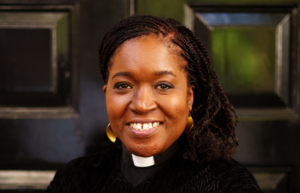
 Grace Bally-Balogun is the Plant Stream Enabler for the Creative Growth Team. She delivered the following reflection at the Bishop’s Clergy Study Day on 23 November 2023.
Grace Bally-Balogun is the Plant Stream Enabler for the Creative Growth Team. She delivered the following reflection at the Bishop’s Clergy Study Day on 23 November 2023. 